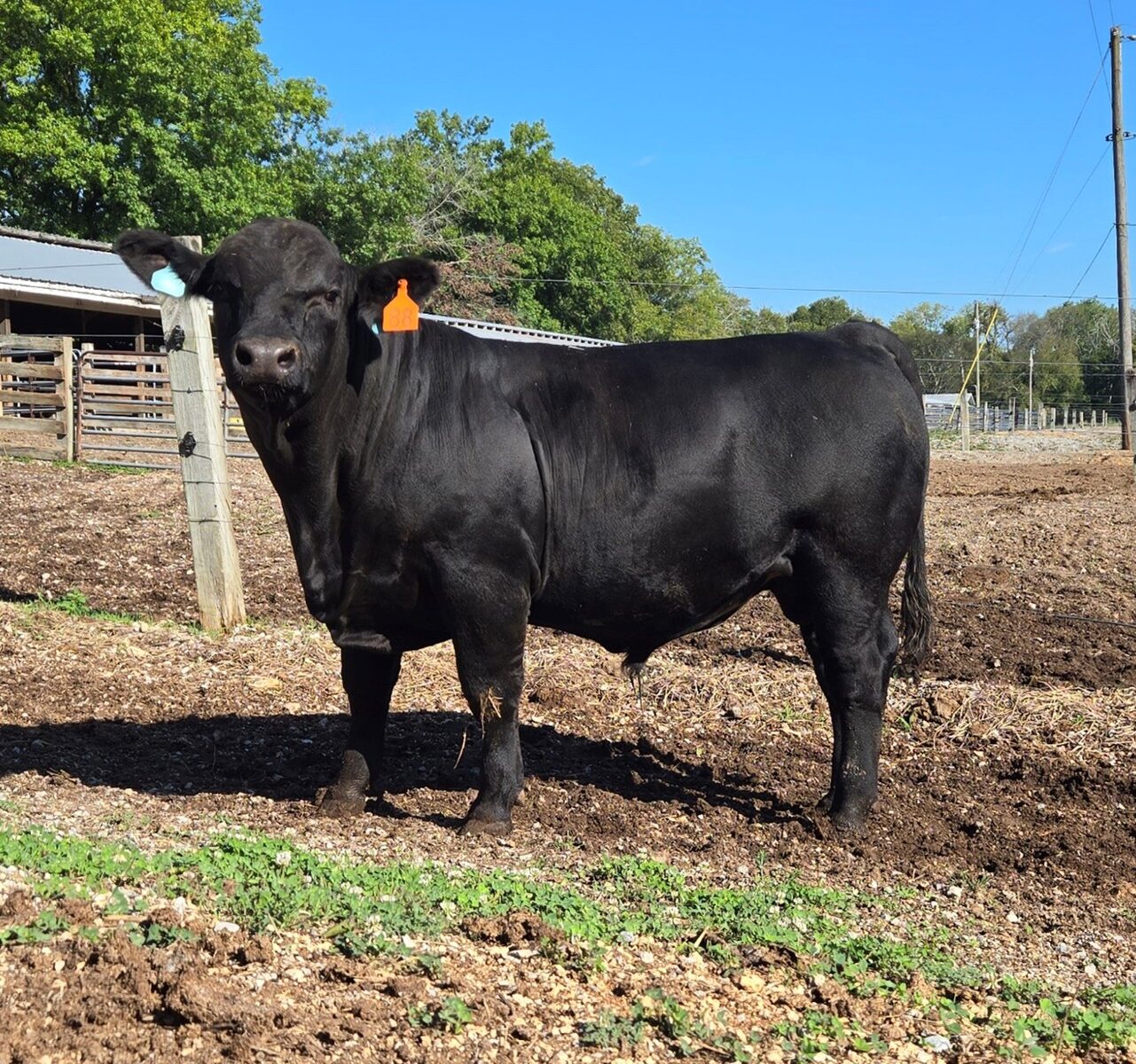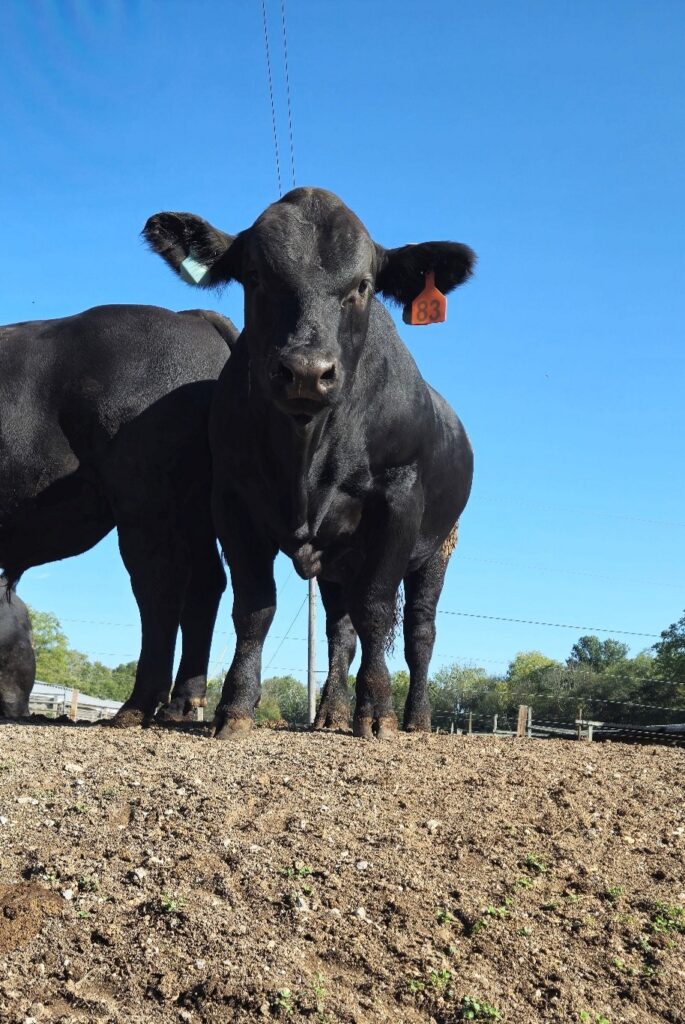

Dr. Saulo Zoca
Assistant Professor and Beef Cattle Reproduction Specialist
Department of Animal Science
P: 931-486-2129
Co-Authored by Cassidy Catrett, Department of Animal Science Graduate Research Assistant
Purchasing a bull for your operation can be one of the most intricate decisions to make. The herd bull you choose will directly impact every calf produced, causing him to be the major contributor to economic returns for your operation. Knowing how important and complex this decision is makes it even tougher to find one that fits your operation. With this in mind, here are a few methods to selecting the “right” bull for your herd.

Bull purchases are tricky decisions when you go to a sale without a game plan. Knowing your goals, narrowing down your options, and considering the cost before the sale will ensure that you purchase a bull that will aid in the profitability of your operation.
If you are in the market for a new bull, join us on December 12, 2024, at the Middle Tennessee Research and Education Center in Spring Hill, TN at noon for the University of Tennessee Bull Test sale. We will have performance tested Angus, Hereford, SimAngus, and Simmental bulls available for purchase. More information can be found at: https://utbeef.tennessee.edu/bull-development-and-evaluation-program/, or by contacting Saulo Zoca at szoca@utk.edu.
- Understand Your Market and What You’re Selling. Different producers have varying marketing strategies, whether they sell calves after weaning, background them and sell as yearlings, or retain ownership and market them on the grid. Some raise their own replacement heifers, while others purchase them. Additionally, some markets offer premiums for specific traits, such as hide color, while others prioritize carcass quality. By clearly identifying your marketing strategy and the traits that are in demand, you can select a bull that aligns with your goals and optimize your return on investment.
- Consider the Breed. Whether you are a seedstock producer aiming to continue raising high-quality purebred stock or a commercial producer interested in utilizing crossbreeding to increase calf productivity, the breed of the bull you purchase is a crucial factor in selecting a new herd sire. Consider whether the breed you are interested in is more maternal or terminal in nature. Are you looking to raise replacement heifers? If so, consider more maternal breeds like Angus or Hereford. If your goal is to improve weaning weights and terminal traits in your calves, look into more terminal breeds like Charolais or Simmental. Clearly understanding the goals of your operation will greatly aid in choosing the right breed.
- Look at Selection Indexes. Selection Indexes are essentially Expected Progeny Differences (EPDs) for profit. These indexes, published by breed associations, allow for multi-trait selection by providing a single data point. Indexes are classified as maternal (including traits for raising replacement females and calves to be marketed at weaning), terminal (including carcass and feedlot traits), or all-purpose (covering birth-to-harvest traits). Keeping your operational goals in mind will help guide you in selecting the right Selection Index for your operation. Once you have your index in mind, identify the bulls in the sale you are interested in and find those that are high performers for that index.
- Look at Specific EPDs. Once you have identified high-indexing individuals, examine other EPDs of interest. If you are trying to improve the structural soundness of your calves, consider the Foot and Claw EPDs published by some associations. If the goal of your operation is to develop replacement heifers, look at EPDs for Stayability, Heifer Pregnancy, Calving Ease Maternal, Mature Cow Weight and Milk to expand your selection criteria.
- Phenotypically Evaluate the Bulls. Once you’ve identified the breed and high-indexing bulls with good numbers, you should now have a small handful of animals you are interested in from the catalog you’ve been reviewing. Doing the upfront work of crunching numbers and determining your goals can save you from having to look at every animal in the sale, leaving you with perhaps ten or fifteen that you are genuinely interested in. Narrowing down your search for the next herd sire becomes much easier when you can attend the sale before it starts and actually see the animals in person. Key things to look for when evaluating these animals include their foot and leg structure, as well as the amount of rib shape and muscle they have. EPDs do not tell the full story of a bull, so evaluating the phenotypes of these animals is a crucial part of choosing the right one.
- Consider the Cost. Once you’ve narrowed down the bulls you’re interested in, establish a budget and stick to it. Your herd sire will directly impact every calf you produce, making it essential to ensure you’re making a smart investment to avoid buyer’s remorse. Understanding the long-term impact this bull will have on your herd will help you determine a realistic budget that aligns with your goals.